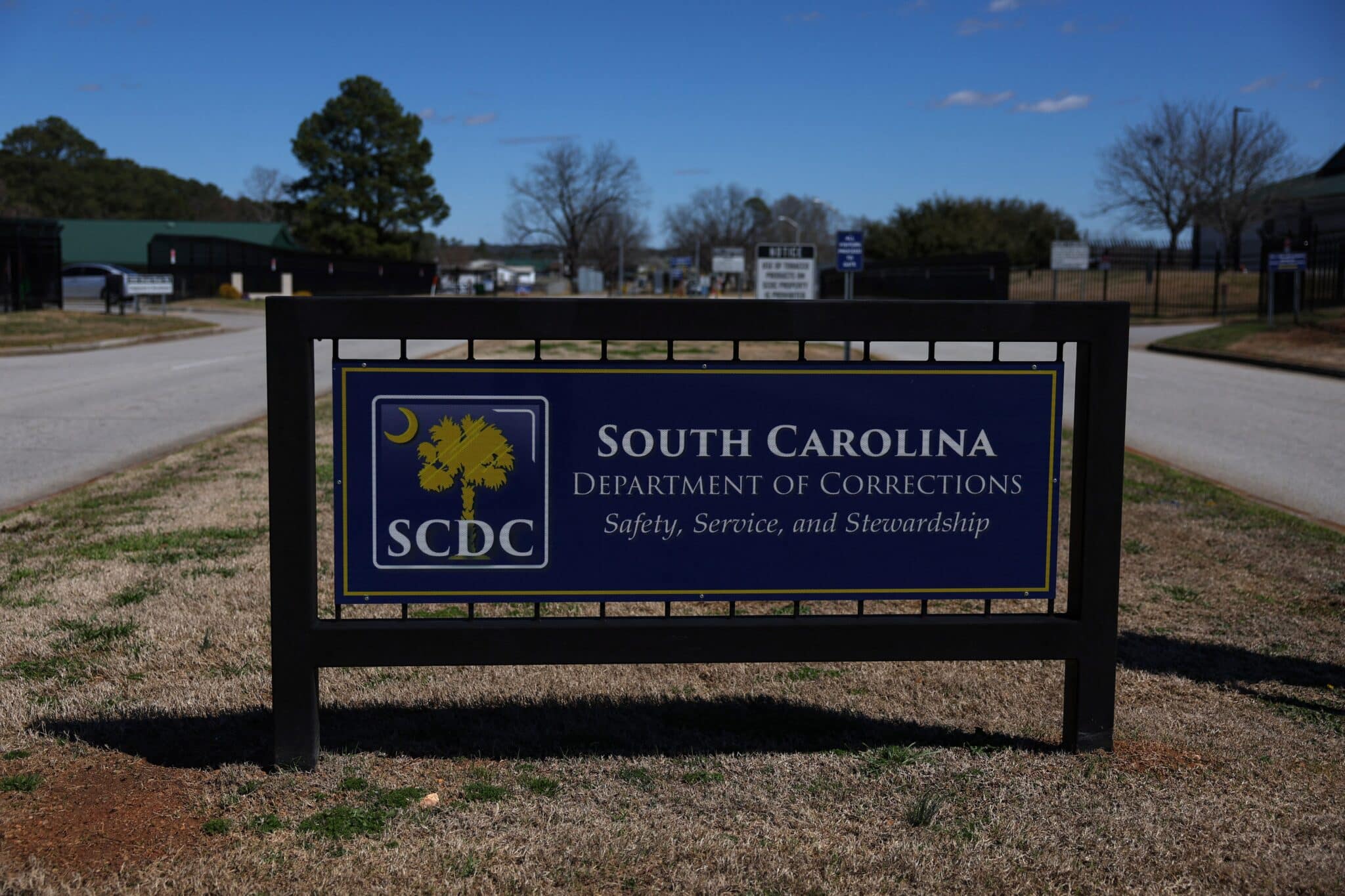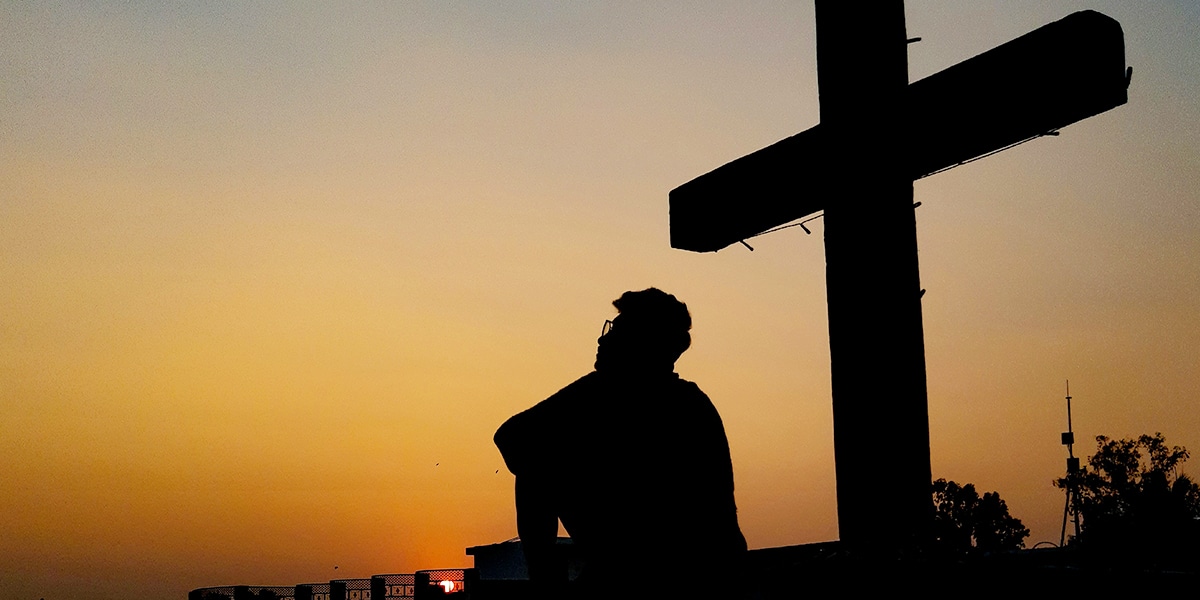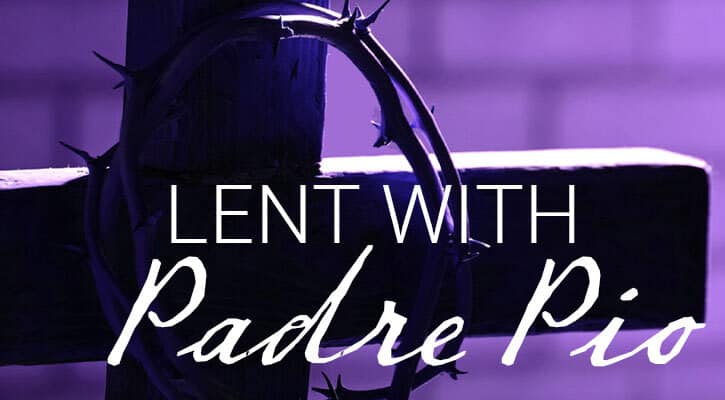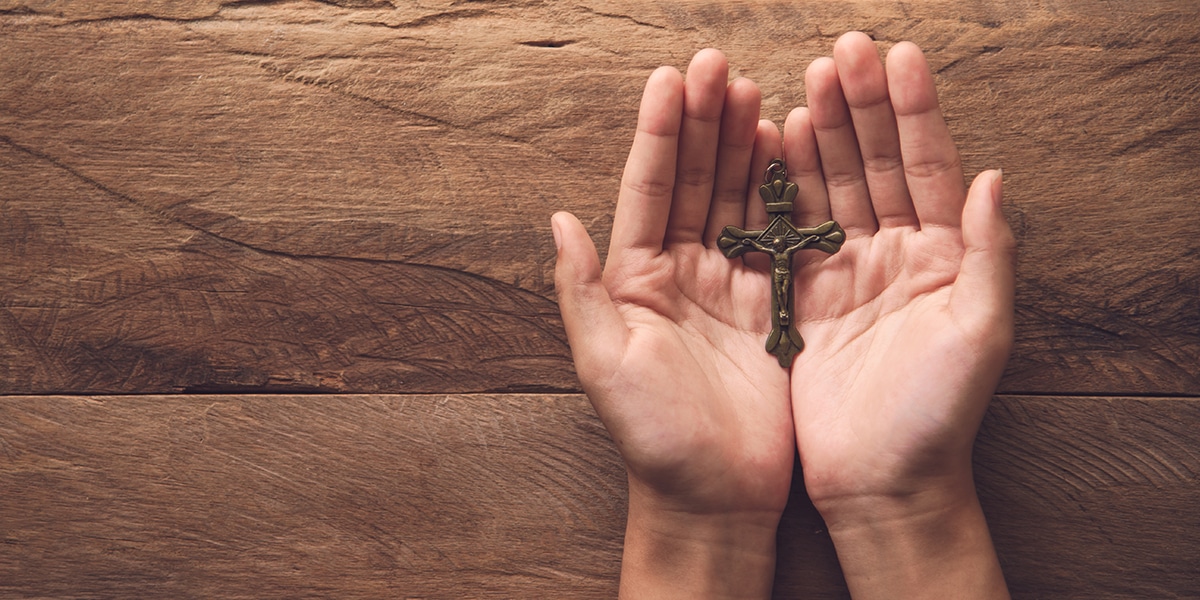Black Catholics have long struggled with the evil of racism both within and outside the Church in the United States. A prominent African American Catholic author and activist reflects on how diversity brings about both healing and a richer faith.
Anyone who knows me understands that my favorite time of year in my hometown of New Orleans is Mardi Gras. This is because it is a sacred time for my cultural family—the Black Masking Indians, more commonly known as the Mardi Gras Indians.
During the era of segregation, people of color could not go to certain parades. Therefore, the parades in Black neighborhoods were held by the various Black Masking culture bearers such as the Indians, Baby Dolls, and Skeletons. These traditions—specifically the Mardi Gras Indians—can be traced back to the 1600s during the gatherings that occurred in Congo Square in the Tremé area of New Orleans. At these gatherings centuries ago, our enslaved ancestors formed alliances with the Indigenous people who would attend as well. The Indigenous people of the area, another group oppressed during colonization, helped slaves escape to freedom and even offered protection for some of them by making them part of their tribes.
Tremé, which I call home, is the oldest Black neighborhood in the country. It is also the location of St. Augustine Church, the oldest Black Catholic parish in the United States. Even prior to the development of contemporary Catholic social teaching, the diverse groups in Tremé were living out some of its themes, such as recognizing the life and dignity of the human person and solidarity, to name a few.
Much as our ancestors did, Black Catholics are still trying to find our rightful place in the Church and struggling with the effects of marginalization and racism in the United States. There is much work that is needed to be done—especially within the Church itself—to address these pain points.
Lessons from Sister Thea
In 1989, Servant of God Sister Thea Bowman, FSPA, did exactly that when she spoke to the US Conference of Catholic Bishops (USCCB) at their annual June meeting. She explained what it meant to be Black (specifically, African American) and Catholic. She said: “That means I come to my Church fully functioning. That doesn’t frighten you, does it? I bring myself, my Black self. All that I am. All that I have. All that I hope to become. I bring my whole experience, my history, my culture. I bring my African American song and dance, gesture and movement, teaching and preaching and healing and responsibility as a gift to the Church.” She ended her moving presentation with the bishops standing hand in hand, singing the spiritual “We Shall Overcome.”
Almost 40 years later, we, as African American Catholics—a distinct group from Africans, Hispanics, or other groups who identify as Black (many times all lumped together in the same category)—are still asking for the Church to see us as a gift and not a burden.
Looking at our history as African American Catholics, we have always had to fend for ourselves in various ways. Our history, which is as old as the Church itself, especially with the founding of the Church in the United States, is frequently overlooked and often not shared. Our ministries are under-resourced or ignored, and our spirituality is constantly having to be defended as being “authentically Catholic” by those who administer the litmus test.
In 2017, I sat on a general session panel at the Convocation of Catholic Leaders, organized by the USCCB. During my prayer time that morning, and in preparation for the session, I watched the YouTube clip of Sister Thea Bowman addressing the USCCB in 1989. The Holy Spirit had me ask the crowd to repeat the phrase “Black is beautiful” three times. I had the crowd perform that exercise as a way to renew the charge by Sister Thea to see Black Catholicism, along with all diversity, as a gift to the Church. This is a struggle that has been addressed in various ways, but it has yet to be solved. Many cultural groups are pushed to the margins of our Catholic faith. This is something that needs to be dealt with.
We are a people of great faith and achievements, but being a minister in the African American Catholic community is difficult. We constantly have to fight to fit in with a Church that sometimes treats us as if we do not belong. There are two factors that I would like to focus on that create this dynamic of marginalization: racism and proximity.
America’s Original Sin
Racism is commonly referred to as “America’s original sin.” Out of that came the dynamic of slavery, the effects of which are still felt today. It is this sin that makes it difficult to perform youth ministry within the African American community. The USCCB just released a pastoral letter titled Open Wide Our Hearts to address this sin and what the Church should do about it as a follow-up to previous pastoral letters on the same topic. Father Bryan Massingale’s book Racial Justice and the Catholic Church powerfully illustrates the issues that divide us as a Church today. Bishop Edward Braxton of Belleville, Illinois, wrote two strong pastoral letters about racism that many of his brother bishops have shared widely as well.
It is through these documents that we are reminded, for those of us who do not have to deal with this issue on a regular basis, that racism does not only occur outside of the Church, but within the Church itself. When we look at the history of the Church in the United States, a Eurocentric model (worship styles, images used, languages spoken) is upheld as what should be the norm. As our society becomes more racially and ethnically diverse, there has been a backlash to anything that is not part of this norm.
Look at the leadership of chanceries around the country. Are the decision-makers representative of the people they are called to serve? When people are called to the table to confront racist actions, are all called, or does leadership only welcome those folks of color who go along with the status quo and are seen as safe? Most of the times the answer is no.
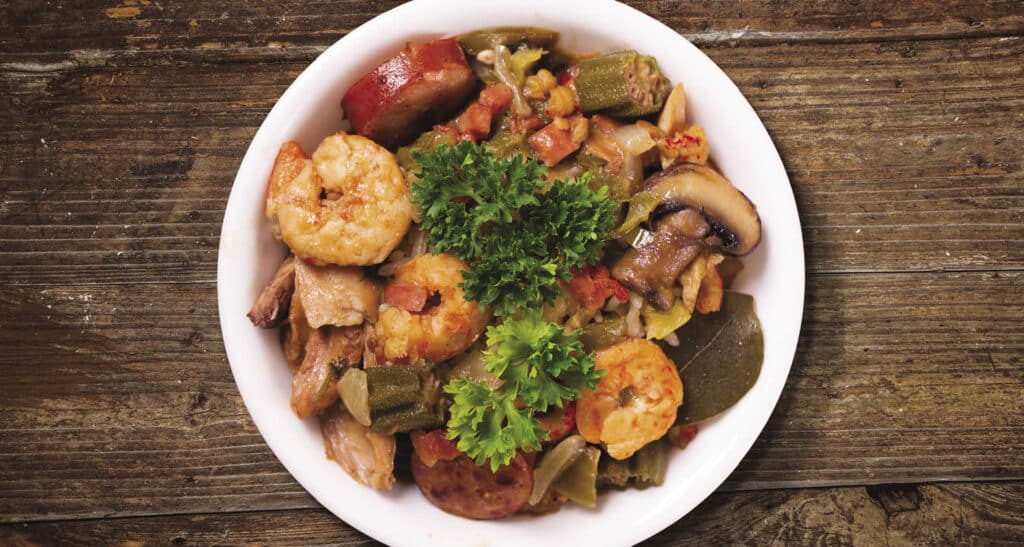
The “Gumbo Pot Theory” illustrates embracing true diversity by looking at a bowl of gumbo. Each of the ingredients in a bowl of gumbo retains its original form, yet they all bring their unique flavor characteristics and combine to create this wonderful, beloved food.
And, to add insult to injury, many times faces of color are used as tokens to show diversity on brochures or marketing and not in the actual programming or decision-making processes. It is because of these often institutionalized, racist occurrences that the African American youth and young adult community do not feel included, and we are called to do our own thing with little to no support from the wider Church.
I wrote Leveling the Praying Field: Can the Church We Love, Love Us Back? as a response to the 2020 murder of George Floyd and the need for additional Catholic resources to discuss the sin of racism with young people. In the book, there is a section that discusses the “Gumbo Pot Theory.” This theory illustrates embracing true diversity by looking at a bowl of gumbo. Each of the ingredients in a bowl of gumbo retains its original form, yet they all bring their unique flavor characteristics and combine to create this wonderful, beloved food.
So, too, must we, as a Church, encourage and allow people from unique ethnic, socioeconomic, and generational backgrounds to remain their authentic selves when they come into our ministries. We must see diversity as a gift and not as a threat. When we allow various cultures to come to the table as their authentic selves, we will truly receive the grace that comes with being one body in Christ. It is not about assimilation, but about the true integration of all of God’s creation. Unfortunately, the sin of racism prevents this from being achieved.
So Close, Yet So Far Away
In April 2018, at their spring meeting, the USCCB invited Bryan Stevenson to address the body about racism as they were writing their pastoral letter. Stevenson is a famous criminal justice lawyer who gained recognition for establishing the National Memorial for Peace and Justice—more commonly referred to as the Lynching Memorial—in Montgomery, Alabama. During his address, Stevenson talked about several factors that cause racism to exist. One factor was proximity. He said the issues of racism persist in this country because people are not within proximity of each other.
We still live in a segregated society. Dr. Martin Luther King Jr. said it best when he said the most segregated time in the United States is Sunday morning. This is very true of Catholic parishes around the country.
Despite the rise of many so-called multicultural parishes around the country, and despite the existence of many parishes from distinct cultures, we are still divided as a Church when it comes to realizing that no one expression of our faith is “more Catholic” than another.
Stevenson said one way to combat racism is for those in Church leadership to be in the authentic presence of others. I remember when we were trying to rebuild our archdiocese following Hurricane Katrina, we had many Catholic groups visit my home parish, St. Peter Claver. These groups, most of whom were White and from a wide range of ages, were in awe at our gospel choir and the sacred art that reflected the people in the pews.
They were struck with preaching that touched on the social justice issues that our communities face. Many were very appreciative of being able to sit with and interact with youth from the African American Catholic experience. When they learned about the specific “right to life” issues that affect our communities—mass incarceration, poverty, racism, poor education, and a lack of other resources—they understood that basic survival was something that many of our families struggle with.
Just as Stevenson suggested to the USCCB, it is when we are in proximity with one another that we can truly see the dignity of another human despite our differences. It is in this “sharing of space” that we share our souls and live as one body of Christ.
Building on the Sacrifices of Our Ancestors
When Sister Thea began her talk with the bishops in 1989, she sang the spiritual “Sometimes I Feel like a Motherless Child.” In her presentation, she continued to share the gifts we, as African American Catholics, bring to the Church, but she also noted how the Church sometimes treats us as second-class Catholics. We, as African American Catholics, are asking the Church we love to show us that it loves us back—not only when it is comfortable and affirms Eurocentric norms, but also when the Church is challenged to truly be a welcoming place for all.
Many of those working to build stronger bonds between different groups in the Church suffer from burnout and often feel like giving up, but the hope is in the fact that our ancestors sacrificed much more so that we could simply be. Much like my Mardi Gras Indian culture’s relationship with the city of New Orleans, it is a struggle at times to keep enduring the misrepresentation or dismissal of the sacredness of our culture by the Church we love.
The Church—both here in the United States and beyond—has benefited from our gifts and continues to do so, but more work needs to be done so that our realities, needs, and worship experiences are seen as just as valid, and Catholic, as anyone else’s. There are still many pains that need to be resolved and bridges that need to be rebuilt throughout this country when it comes to the experiences and realities of communities of color.
To truly be one body of Christ does not mean for everyone to be the same, but rather to be welcoming of all experiences and expressions of the Catholic faith. It is when we go to the margins that we encounter the Christ who is already there waiting for us. So let us go and encounter the gifts in the numerous diverse communities in our country.




